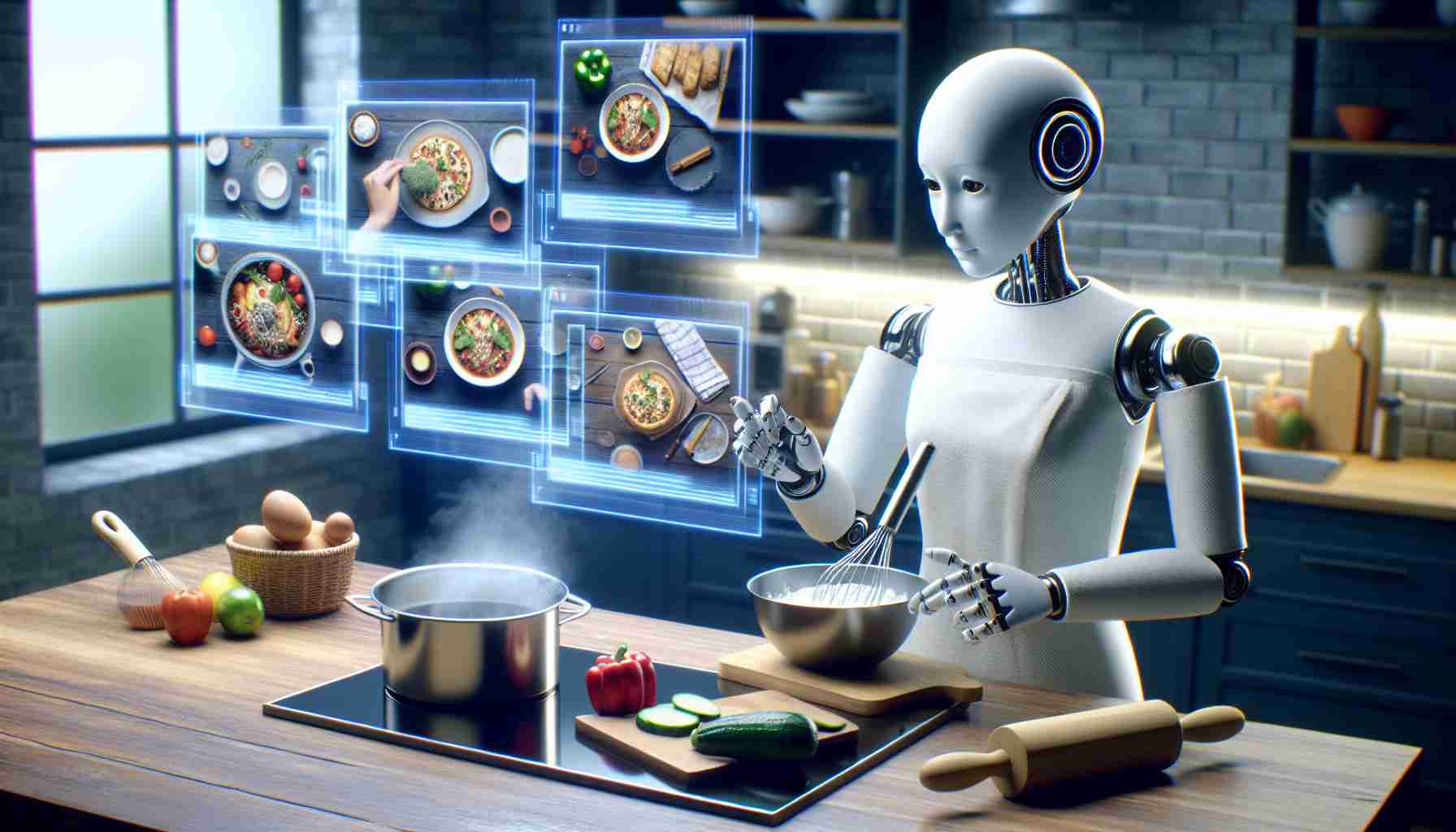- AI technology can convert food images into detailed recipes, enhancing culinary creativity.
- Building a custom AI system with powerful hardware can significantly improve the recipe generation process.
- The Llama 3.2 Vision model enables the AI to analyze and interpret food photos effectively.
- A well-structured system prompt is crucial for guiding AI in recognizing ingredients and cooking steps.
- Persistence and refinement of input can lead to improved accuracy and quality in recipe generation.
- Incorporating insights from other AI models, like Google’s Gemini, can enhance output quality.
Imagine snapping a photo of your dinner and receiving a gourmet recipe in seconds! This was my goal when I challenged AI to create recipes from food images. The journey started easily—using tools like ChatGPT to generate quick recipes—but quickly escalated into a tech-savvy adventure.
To dive deeper, I built a unique AI system with Ollama on my powerful Mac mini, complete with a chat interface running on a Raspberry Pi. Equipped with the new Llama 3.2 Vision model, my AI could “see” food photos and generate recipes. Armed with this tech, I anticipated effortless culinary creativity.
But here’s the twist: crafting vibrant, fully formatted recipes didn’t go as smoothly as planned. The AI would often produce results that were either incomplete or chaotic. I needed a robust system prompt to guide Llama through the process, ensuring it recognized ingredients and cooking steps accurately. After collaborating with Google’s Gemini, I landed on a comprehensive prompt designed to extract the best possible output from my AI.
The initial attempts were a learning curve—sometimes generating JSON correctly, other times falling flat. Yet, persistence paid off. By refining the input and adding support from a more robust model, success was just around the corner.
The takeaway? With the right setup and a sprinkle of patience, AI can transform everyday food photos into delicious recipe masterpieces. Dive into the world of photo-driven cooking—you might just find your new favorite dish!
Unlocking Culinary Creativity: How AI is Transforming Recipe Generation from Food Images
Introduction
Imagine transforming a simple photo of your dinner into a gourmet recipe within seconds. The rapid advancements in AI technology have made this vision a reality, allowing food enthusiasts and home cooks to explore culinary creativity through AI-generated recipes. This article delves into the innovations, limitations, and potential of AI systems in culinary applications, as well as a personal journey of developing such a system.
Innovations in AI Recipe Generation
The latest AI technologies, particularly models like Llama 3.2 and Google’s Gemini, have made significant strides in recognizing and processing food imagery. These models utilize sophisticated algorithms to analyze various food components and generate well-structured recipes almost instantly.
Key Features:
– Image Recognition: Advanced models can identify ingredients in photos accurately.
– Recipe Structuring: Capable of producing fully formatted recipes that include ingredients, cooking instructions, and serving suggestions.
– Customization: Users can input personal preferences, ingredient availability, and dietary restrictions to tailor the recipe output.
Pros and Cons of AI in Recipe Generation
Pros:
– Creativity Boost: Inspires users to try new dishes they might have otherwise overlooked.
– Time-Saving: Quickly generates meal ideas without extensive searching.
– Accessibility: Makes gourmet cooking achievable for novices.
Cons:
– Inconsistency: AI-generated recipes can vary from coherent and delicious to random and impractical.
– Dependence on Input: The quality of the output heavily relies on the initial image quality and the system prompt used.
Market Forecasts
As AI continues to evolve, the culinary technology market is expected to grow significantly. Industry analysts predict a surge in the adoption of AI in home kitchens, with a potential market value increase of 20-30% in the next five years. This growth is driven by increasing smartphone usage and the demand for convenient cooking solutions.
Limitations and Challenges
– Incomplete Recipes: Often, AI struggles to include every necessary detail in recipe generation, leading to potentially unsatisfactory cooking experiences.
– Cultural Sensitivity: Generating recipes that cater to diverse culinary traditions can pose a challenge for AI models.
Use Cases
– Everyday Cooking: Home cooks can snap photos of their meals and receive suggestions for future cooking.
– Food Photography: Food bloggers can enhance their culinary content with AI-generated recipes based on their images.
Insights & Predictions
In the coming years, we can expect AI systems to incorporate user feedback more effectively, enabling improvements in recipe accuracy and personalization. Enhancements in integration with kitchen appliances may also facilitate cooking automation directly from AI-generated instructions.
Security Aspects
As with any technology that collects user data, privacy and security are paramount. It’s essential for developers to ensure that personal information shared with AI systems remains confidential and secure.
Related Questions
1. How do AI models like Llama 3.2 and Google’s Gemini enhance recipe generation from images?
– These models leverage advanced computer vision techniques to analyze food images and generate coherent, creative recipes by understanding ingredients and cooking methods.
2. What are the best practices for using AI-generated recipes?
– Users should verify AI outputs against trusted recipes, customize provided ingredients based on personal preferences, and be prepared to improvise as AI may not always produce perfect results.
3. Will AI replace traditional cooking methods?
– While AI will augment and enhance cooking experiences, it is unlikely to replace traditional methods entirely. Instead, it will serve as a tool for inspiration and efficiency in the kitchen.
Conclusion
The journey of creating a robust AI recipe generation system highlights both the potential and challenges inherent in this exciting technology. With ongoing innovations and refinements, AI is set to revolutionize the cooking landscape, catering to novice cooks and culinary experts alike.
For more information on this technology, visit OpenAI or Google AI.
